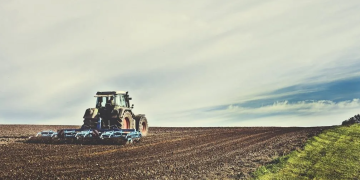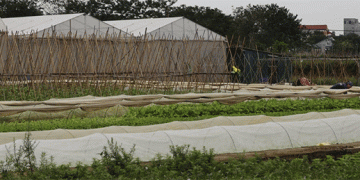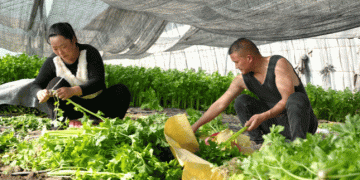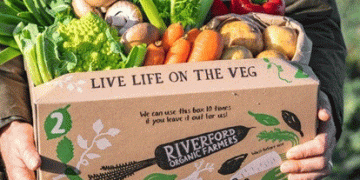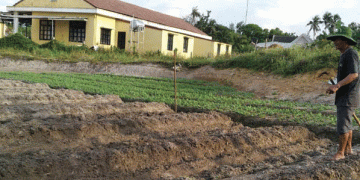2021 was a turbulent year for the fruit and vegetable sector in Europe. Some factors such as climate change, war conflicts, rising prices and Brexit influenced the harvests as well as their subsequent commercialization.
In this sense, Europe was not left out of the global problems and the fruit and vegetable market suffered in terms of exports to foreign markets as we will see below.
The climate, the pandemic and the increase in transport and production prices, major conditioning factors
According to the European Statistics Handbook 2022 report by Fruit Logistica, fruit and vegetable markets in Europe faced three big problems again in 2021: the weather, the continuing coronavirus pandemic and rising transport and production costs.
During the summer months, consumers had more options to eat out or take a vacation thanks to the lifting of the restrictions that were lifted regarding Covid. But the fourth and fifth waves of the pandemic led to new limits being imposed by the autumn.
The purchase of fruits and vegetables at home was boosted by previous lockdowns and increased significantly in 2020, which in general did not increase more than in 2021. The pandemic has altered global commodity flows in a way never seen before. Container freight rates have increased significantly.
In addition, fuel has become significantly more expensive in the last 12 months, which makes transportation even more expensive.
Sometimes, raw materials for production and packaging have been scarce, so they have gone up in price. This is a situation that was not seen in previous years. Unlike unfavorable weather conditions that are nothing new for market production.
Heat waves and increasingly long periods of drought have not had a significant effect on foreign trade in fruits and vegetables
However, its increasing severity is remarkable: heat waves and periods of drought are getting longer; rains are more often extreme and sudden, resulting in floods. Either the lack of rain or too much intensity, both situations were recorded in 2021. That said, the overall water supply was better than in past years.
The expensive and limited transport capacity has not yet had a massive effect on the foreign trade of fruits and vegetables. For trade within and outside the EU in 2021, import and export volumes were only slightly lower than the previous year. In some cases, in fact, they were slightly higher. Fears that exports to the UK would collapse after Brexit failed to materialise.
The EU experiences a slight drop in exports to the UK after Brexit
Although the EU-27 sent smaller quantities to the UK than before Brexit, the fall was moderate, with vegetables down 2% and fruits down 7%. More memorable were the images of empty supermarket shelves in the UK, partly due to longer waiting times for border control. A bigger problem, however, was the national transportation of goods due to the lack of truckers.
This is a problem that could affect other countries in the future. EU countries that previously delivered larger amounts to the UK have lost out with the new context. In vegetables, they are Spain (-5%) and the Netherlands (-3%).
For fruit, Spain, the leading supplier, exported a somewhat higher volume to the UK, but this figure was compared to a comparatively lower volume in 2020. The Netherlands (-33%) in particular, but also France (-4%), lost volumes significantly.
Although the EU-27 sent smaller quantities to the UK than before Brexit, the fall was moderate, with vegetables down 2% and fruits down 7%.
The departure of the United Kingdom from the EU has led to a clear change in terms of the foreign trade balance. In previous years, the foreign trade balance was in deficit for both fruits and vegetables. This deficit still exists for fruit, but the balance of foreign trade in vegetables is now slightly positive.
In any case, fresh fruit imports into the EU are significantly higher than its vegetable imports. Bananas and other exotic fruits that are not mostly grown in the EU must be imported in large volume.
Fruit imports (both internal and external) fell slightly in 2021. Germany, the first importer in 2020, imported less, so the Netherlands moved to the first place. However, the Netherlands is also the second largest exporter of fruits after Spain, and not all the volume exported from the Netherlands is produced in the country.
EU fruit exports were slightly higher compared to 2020. For vegetables, Germany maintained its position as the number one importer, although with a lower volume than in the previous year. In general, a slightly higher volume of vegetables was imported into the EU.
Exports within the EU fell slightly in 2021
Exports, on the other hand, were in 2021 slightly below the level of the previous year. The proportion of non-EU trade is comparatively high for fruit. 41% of bananas, pineapples, avocados and mangoes, in particular, are imported from countries outside the EU.
On the contrary, trade within the EU dominates in oranges and apples. Fruit exports remained mostly within the EU. However, Brexit has changed the proportions a little in favor of trade with third countries. In 2021, almost 18% of fruit exports left the EU. In terms of volume, bananas, apples and oranges dominate exports. For imports of fresh vegetables, the share of extra trade is much lower than for fruit, at just under 16%. Tomatoes and onions have the largest share of imports from outside the EU among imported vegetables in the largest volumes.
The main imports from outside the EU are tomatoes from Morocco and onions from New Zealand. 78% of vegetable exports remained within the EU in 2021. A year earlier, when the UK was still a Member State, 89% of vegetable exports were intra-trade. Exports were strongly dominated by onions, followed by tomatoes and peppers.
Overall, last year’s fruit and vegetable harvest in the EU-27 was about 1% lower in 2021 than in 2020, according to preliminary data. It had been estimated that the fruit losses were significantly higher, but ultimately the harvest was only 1% lower annually. A large harvest of apples offset the negative trends for several other types of fruit.
The production of peaches, nectarines and apricots was affected by frosts during flowering in Southern Europe. Also, cold spells in January, March and April produced severe losses, leading to the smallest harvest in 30 years.
The production of oranges and easily peeled fruits was initially estimated to be significantly lower than the previous year due to unfavorable conditions. Spain predicted a smaller harvest due to adverse weather, although some regions were better able to avoid damage.
The expensive and limited transport capacity has not yet had a massive effect on the foreign trade of fruits and vegetables.
Moderate losses in Europe and uncertainty for the 2022/2023 campaign
Ultimately, the losses across Europe were not as severe as expected. According to preliminary data, the orange harvest was only 1% lower than the previous year, while the volume of easy peeling was 2% lower.
These percentages indicated a record production volume. But frosts led to regional losses, and in almost all countries it was too cold for the flower. That said, 11.5 million tons of apples were harvested more than the previous year. A good part of the increase occurred in Poland, which is therefore a factor of uncertainty for the European market in the 2021/22 marketing season.
Unlike apples, the pear harvest was scarce throughout Europe. Italy was hit by frost, and this led to the smallest pear harvest in three decades.
The vegetable harvest was more or less the same. Only 0.3% lower than in 2020. Smaller harvests of lettuce, cauliflower and zucchini were offset by a larger crop of onion. Many countries in Europe were affected by extreme weather conditions.
Particularly noteworthy were the July floods in parts of Germany and the Benelux. Areas of Spain and Italy also suffered outages and damage caused by intermittent and unusually heavy rains and regional flooding. Initially, the vegetable season in Central Europe had a slow start, due to the low spring temperatures.
Subsequently, there was not as much sunshine as in 2020, which seemed to have led to yield losses, in particular for tomatoes, even in protected crops. The situation was further aggravated by the emergence of new plant diseases. Cucumbers and peppers seemed to have coped better with the conditions, with higher volumes harvested.
However, some tomato productions had switched to other vegetables. On the other hand, the increase in energy costs is a challenge, especially for greenhouse cultivation in the Benelux countries.
A source: https://www.diarioelcanal.com
